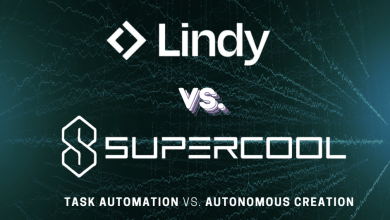There’s something about German appliances that just feels different when you open the door or adjust a setting. Maybe it’s the precise way everything clicks into place, or how controls respond exactly as expected without any guesswork. German fridge brands have built their reputation on engineering excellence and long-term reliability, approaching refrigeration as both a technical challenge and an exercise in user experience design. These aren’t just appliances—they’re sophisticated systems designed to preserve food optimally while fitting seamlessly into modern kitchen designs. The attention to detail extends from energy efficiency algorithms to the sound dampening materials that keep these powerful cooling systems whisper-quiet.
AI-Driven Engineering Excellence in Precision Temperature Management
German refrigerator manufacturers approach cooling technology with the same precision they bring to automotive engineering. Take Liebherr, for instance—they’ve developed BioFresh technology that maintains humidity and temperature levels so precisely that vegetables stay crisp for weeks longer than in conventional fridges.
The secret lies in multiple climate zones within the same appliance. Instead of treating the entire refrigerator as one uniform environment, German designs create microenvironments optimized for different food types. Meat and fish storage areas maintain just above freezing with low humidity, while vegetable crispers hold slightly warmer temperatures with controlled moisture levels that prevent both wilting and condensation.
Miele takes this further with their PerfectFresh Pro zones, which can adjust temperature and humidity independently. You’re not just storing food—you’re creating optimal preservation conditions that can extend freshness by 2-3 times compared to standard refrigeration. The technology works by monitoring actual moisture content in the air and adjusting accordingly, rather than just maintaining set humidity percentages.
Energy Efficiency Through Smart Design
Here’s where German engineering really shines: these brands consistently achieve A+++ energy ratings while delivering superior cooling performance. The trick isn’t just better insulation—though their foam injection techniques and door sealing systems are impressively thorough.
The real innovation happens in compressor design and control systems. Bosch, for example, uses variable-speed compressors that adjust cooling output based on actual need rather than cycling on and off at full power. This approach reduces energy consumption by 25-30% while maintaining more stable internal temperatures.
The smart sensors deserve special mention. Instead of simple thermostats, German fridges use multiple temperature and humidity sensors throughout the interior, feeding data to microprocessors that optimize cooling cycles in real-time. When you open the door, the system doesn’t just blast cold air—it calculates exactly how much cooling is needed and where to deliver it most efficiently.
Sound Engineering and Vibration Control
If you’ve ever been kept awake by a noisy refrigerator, you’ll appreciate German attention to acoustic design. These manufacturers treat sound reduction as seriously as cooling performance, using techniques borrowed from automotive and industrial applications.
AEG’s Silence Plus technology employs specially designed compressor mounts that isolate vibrations, while sound-absorbing materials line interior panels to eliminate the echoing effect common in cheaper appliances. The result is operation so quiet that many users initially worry their new fridge isn’t working properly.
The fans use aerodynamically optimized blade designs that move air efficiently without the whooshing sounds typical of conventional refrigerator fans. Even the ice makers operate with minimal noise, using sound-dampening chambers around moving parts.
Build Quality and Material Selection
German appliances feel substantial because they are substantial. Door hinges use precision bearings designed for hundreds of thousands of open-close cycles. The interior shelving systems use tempered glass that’s both stronger and more hygienic than plastic alternatives common in other brands.
What’s really impressive is the attention to details you don’t see immediately. Wire shelving uses specialized coatings that resist both corrosion and bacteria growth. Drawer slides operate smoothly even when fully loaded with heavy items, thanks to ball-bearing systems typically found in high-end furniture.
The exterior finishes go beyond aesthetics. Stainless steel surfaces use special treatments that resist fingerprints and scratches, while maintaining the appearance that makes these appliances kitchen centerpieces rather than just functional equipment.
Innovation in Food Preservation Technology
German brands consistently pioneer preservation technologies that other manufacturers eventually adopt. Siemens’ hyperFresh system uses controlled atmospheric pressure to slow food aging at the cellular level. By reducing oxygen exposure while maintaining proper humidity, vegetables and fruits retain nutritional content longer while staying visibly fresh.
The NoFrost technology these brands have perfected eliminates ice buildup without the temperature fluctuations that damage frozen foods. Instead of periodic heating cycles that partially thaw food, German systems use sophisticated airflow patterns and moisture management that prevent ice formation entirely.
Some models incorporate UV sterilization systems that eliminate bacteria and odors without chemical treatments or ozone production. The UV-C light wavelengths destroy microorganisms while being completely safe for food contact.


